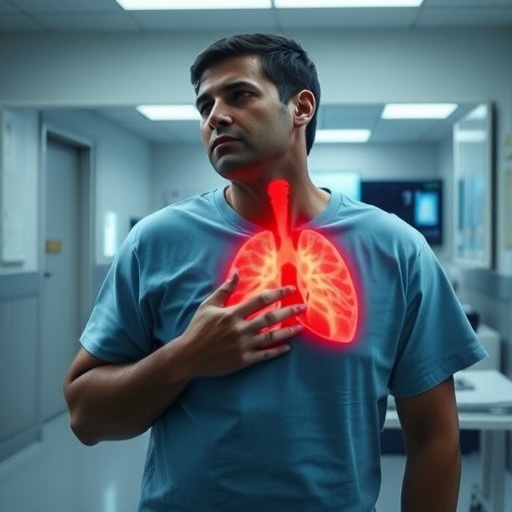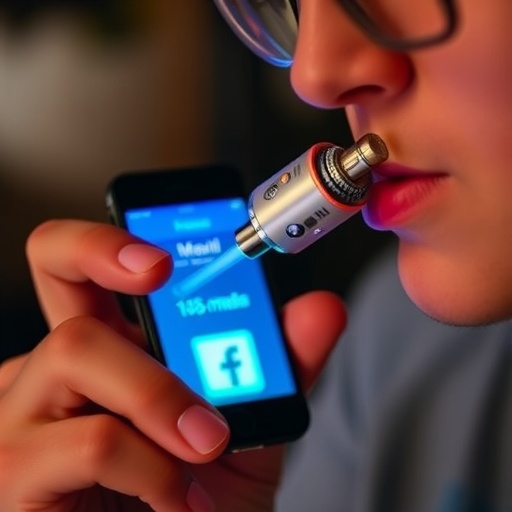In the landscape of emergency medicine, chest pain consistently ranks as the second most prevalent cause for visits to emergency departments (ED) worldwide, bringing with it both urgency and complexity. Yet, a substantial majority of these presentations—nearly 80 percent—are classified as low-risk with no direct association to cardiac pathology. This paradox presents a diagnostic and therapeutic challenge, wherein clinicians must navigate not only the physical symptomatology but also often overlooked psychological contributors. Emerging research from Indiana University School of Medicine and Regenstrief Institute elucidates this critical interface, shedding light on the profound role of anxiety and related psychiatric comorbidities in patients with low-risk chest pain.
Chest pain is an alarm bell that instinctively triggers investigations focused on ruling out myocardial infarction or other acute cardiac events, given their life-threatening nature. However, when extensive cardiac testing repeatedly returns negative, the etiology of symptoms frequently remains unexplained, leaving patients and providers in a limbo. This uncertainty can propagate a cycle of repeated visits, escalating healthcare costs, and diminished patient quality of life. The recent study spearheaded by IU researchers posits that for many of these low-risk chest pain cases, the unseen culprit may reside within the psychological domain, such as anxiety disorders, panic disorder, and somatization—the physical expression of psychological distress.
The research unveiled that over 42 percent of patients presenting to the ED with low-risk chest pain exhibited severe anxiety as measured by the Generalized Anxiety Disorder (GAD-7) scale, a rigorously validated clinical tool devised by IU’s Kurt Kroenke, M.D., to quantify anxiety symptom severity. Remarkably, this cohort also demonstrated a striking prevalence of panic disorder, with approximately 75 percent screening positive. The confluence of anxiety with other comorbid psychiatric conditions, including depression and post-traumatic stress disorder, underscores the multifactorial psychological burden borne by these patients, necessitating an integrated clinical response.
This pivotal exploration was nested within the larger framework of the Patient-Centered Treatment of Anxiety after Low-Risk Chest Pain in the Emergency Room (PACER) trial, a novel investigation into personalized intervention strategies. The PACER trial compared traditional, therapist-led cognitive behavioral therapy (CBT) with peer-supported, internet-based CBT modalities. These therapy formats aim to recalibrate maladaptive thought patterns and empower patients in managing the visceral manifestations of panic and anxiety, thereby ameliorating symptom severity and optimizing long-term health trajectories.
CBT, as attested by decades of research, modulates the neuropsychological circuits underlying anxiety disorders by imparting skills for cognitive reframing, distress tolerance, and behavioral activation. The IU study importantly highlights that short-term CBT interventions, even when delivered remotely or with peer facilitation, confer significant mitigation of anxiety symptoms in patients with low-risk chest pain. This finding opens a transformative avenue for scalable, accessible mental health support embedded within emergency care paradigms, particularly crucial during times when resource constraints limit traditional therapy availability.
Complementing CBT’s efficacy, pharmacotherapy remains a cornerstone in the therapeutic arsenal against anxiety disorders manifesting in chest pain presentations. Antidepressants, particularly selective serotonin reuptake inhibitors (SSRIs), and anxiolytic agents have consistently demonstrated symptom modulation by targeting neurotransmitter systems implicated in anxiety pathophysiology. Dr. Kroenke astutely draws an analogy between anxiety management and other chronic conditions such as hypertension, emphasizing that pharmacologic intervention—when judiciously prescribed—can attenuate both the intensity and recurrence of anxiety episodes, much as antihypertensives stabilize blood pressure fluctuations.
The integration of pharmacologic and psychotherapeutic interventions provides a synergistic approach that addresses both the neurochemical and cognitive-behavioral substrates of anxiety disorders. This holistic management strategy not only diminishes symptomatic distress but also crucially interrupts the cycle of repeated ED utilization driven by misattribution of somatic anxiety symptoms to cardiac pathology. Consequently, healthcare systems can redirect finite resources towards high-risk patients requiring acute cardiac care, while simultaneously enhancing outcomes for those grappling with psychological comorbidities.
Notably, the study’s contribution extends beyond clinical practice into shaping emergency medicine guidelines and policies. Traditionally, reassurance in the ED setting has been the default strategy following negative cardiac evaluations for chest pain. However, this investigation underscores that reassurance alone is insufficient, often resulting in persistent symptomatology and recurrent ED encounters. Embedding mental health screening tools such as the GAD-7 and panic disorder checklists within triage protocols could fundamentally improve diagnostic accuracy and expedite tailored referrals for anxiety treatment.
The implications for emergency clinicians are profound: the adoption of a biopsychosocial model that appreciates the intersection of mind and body is imperative. Emergency departments, often the first point of contact for many patients with undiagnosed anxiety, are uniquely positioned to initiate this paradigm shift. Through interdisciplinary collaboration involving emergency physicians, mental health specialists, and behavioral therapists, care pathways can be structured to identify and address psychological distress early in the clinical course.
Moreover, integrating technology-enabled therapeutic platforms like internet-based CBT offers a pragmatic solution to barriers such as limited mental health workforce, patient stigma, and geographic access. The positive outcomes highlighted by the PACER trial for internet-facilitated interventions suggest a scalable, cost-effective approach to meet the burgeoning demand for psychological care in emergency settings and beyond.
This research embodies a critical movement towards precision medicine in emergency care, emphasizing personalized, evidence-based treatments that transcend conventional cardiac workups. By illuminating the psychological underpinnings of low-risk chest pain, the study paves the way for innovative clinical pathways that promise to reduce patient suffering, avoid unnecessary testing, and optimize healthcare resource allocation.
In the broader context, these findings resonate with the increasing recognition of mental health’s impact on physical symptomatology and healthcare utilization patterns worldwide. Anxiety and panic disorders, when unrecognized or untreated, pose substantial burdens not only on individuals but also on health systems. Interventions tailored to these conditions hold substantial promise in enhancing public health outcomes and ushering in a new era of integrative emergency medicine.
This study was facilitated through support from the Patient-Centered Outcomes Research Institute, reflecting a commitment to patient-focused investigations that yield actionable insights. The publication titled “Psychological Comorbidity in Patients Presenting to the Emergency Department With Low-Risk Chest Pain and Anxiety” is detailed in Academic Emergency Medicine, heralding a significant advance in understanding and managing this complex clinical challenge.
In sum, this groundbreaking investigation advocates for a reconceptualization of low-risk chest pain presentations in emergency settings—from a predominantly cardiac lens to one that rigorously incorporates psychological evaluation and intervention. This evolution in clinical practice promises not only improved patient-centered care but also more sustainable healthcare delivery models, ultimately benefiting both patients and providers in the relentless pursuit of health and well-being.
Subject of Research: Psychological comorbidities, particularly anxiety and panic disorders, in patients presenting with low-risk chest pain in emergency departments and their implications for treatment.
Article Title: Psychological Comorbidity in Patients Presenting to the Emergency Department With Low-Risk Chest Pain and Anxiety.
News Publication Date: 8-Aug-2025.
Web References:
http://dx.doi.org/10.1111/acem.70113
References:
Kroenke, K., et al. (2025). Psychological Comorbidity in Patients Presenting to the Emergency Department With Low-Risk Chest Pain and Anxiety. Academic Emergency Medicine. DOI:10.1111/acem.70113
Keywords: Health and medicine, Clinical medicine, Anxiety disorders, Low-risk chest pain, Emergency department, Cognitive Behavioral Therapy, Psychotropic medications, Panic disorder, Patient-centered treatment
Tags: anxiety disorders in chest pain patientsdiagnostic challenges in non-cardiac chest painemergency department patient managementimpact of anxiety on healthcare costsIndiana University School of Medicine studieslow-risk chest pain evaluationmental health and physical symptomspsychological comorbidities in emergency medicinerecurrent emergency department visitsresearch on anxiety and chest painrole of psychological factors in chest painunderstanding patient anxiety in ED





